Catching Up With 9th and Colorado
It has been a while since we wrote about this interesting, controversy-filled, and ongoing saga of Denver infill development. Previous posts are archived here. Some interesting things have transpired since last writing back in December 2012.
- King Soopers pulled out as anchor tenant for the project, apparently deciding that it couldn’t create a viable store given constraints of the General Development Plan. One of these constraints required that the store’s surface parking be located across a (restored) street from the store itself.
- The Houston-based developer Lionstone Group took over from Atlanta-based Fuqua Development, which had taken over from Sembler Company, which had taken over from Shea Properties. Shea started the parade of developers back in 2004.
- Lionstone subsequently announced that it intended to buy only the parcel of land dedicated to residential development, leaving CU to consider developers for the rest of the site. Lionstone is looking to build, in collaboration with Alliance Residential, 325 “higher-end” apartments serviced by an existing parking garage. Lionstone just closed the deal for this portion of the site.
- The Denver Urban Renewal Authority is creating a tax increment financing plan to collect property tax on the residential section. The hope is that putting the residential development in place will increase interest from developers for the rest of the site.
City councilperson Mary Beth Susman puts the best face on this series of events: “I am optimistic that the rest of the property will be developed because of the interest that exists, not only from Lionstone but other development companies as well, and I hope to see better urban design for the project.” Susman’s City Council running mate Jeanne Robb says that “Working with Councilwoman Susman and Planning Director Rocky Piro, we hope to see redevelopment that matches both goals and spirit of the General Development Plans with Denver’s.”
The question of what “better” urban design will look like remains to be answered. In the meantime, comments in the Denver Post and on various websites and Facebook pages indicate that neighbors like the idea of having a new developer, especially after the Walmart brouhaha. “Urban village” is their new mantra and rallying cry, incorporating some combination of the following elements. High density. Walkable. Mixed use. Bike lanes. Minimal to no surface parking. More office space. More dwellings above shops, or what Susman and Robb alternately refer to as more “rooftops” and “pocketbooks.” No big box stores. Local retailers. Boutique stores. A place to enjoy and not just a place to shop. An integration of spaces to live, work, shop and play. More entertainment, like a state-of-the-art Cineplex catering to art house films. More open space, like a big park. Neighbors want “unique” and “upscale”, something akin to Cherry Creek. They want stuff that will cater to the particular demographic that can’t wait for the Trader Joe’s to open just off-site (a store that will likely bring much more street-clogging traffic to the area than an appropriately site-scaled Walmart, but that seems to be of no consequence to neighbors).
On the other hand, citizens impatient with the pace of development are still giving neighbors flak for being NIMBYs and Elitists. Councilpersons Susman and Robb have been hammered for kowtowing to the more vocal neighbors. Neighbors respond that it’s their right as stakeholders to express their desires for the site, and of course they’re right about that. The real questions are (1) whether a variety of opinions about what should fill the site are being heard, as opposed to just the opinions of those folks better-positioned (by their work schedules, access to social media, and relationships with city councilpersons) to exert pressure about what “the community” wants, and (2) whether folks in other zip codes have any legitimate right to offer their opinions given that “urban” means city living and not gated enclave living.
Peppered throughout the social media commentary are some particularly sensible takes. One is that the process followed up to now for soliciting citizen input and debating development alternatives has been a “disaster.” The new developer might try some different tactics, a few of which have been highlighted elsewhere on this blog (e.g., here). And if a sales tax-generating Big Box retailer is in the cards—there are those who reasonably suggest that the project can’t financially succeed without one—then developers, politicians, and neighbors might apply a little more thought to quid-pro-quo compromises capable of delivering most of what each party wants.
A second sensible take is a plea for more historic preservation. Fuqua Development, and Sembler before it, intended to save the 1920s Nurses Dorm and its historic quad. Writing in the Post, “Iluvden5280” eloquently urges the next developer to do the same:
Please save the wonderful historic buildings that make up the area around the quadrangle in the middle of the old campus. These buildings are irreplaceable historic gems that will add character and a sense of place to your development. All of these Georgian style buildings are behind the nurses dorm and are from the 1920’s and 30’s and are red brick with wonderful limestone accents. Some of the past developers have proposed demolishing them. Please keep them and incorporate a true sense of place and uniqueness to this development.
Interestingly, a new website focused on 9th and Colorado called East Denver Green has appeared, and it appeals for preservation of even more historical structures. This is worth looking into, as we’ve previously suggested on this blog. Some of these structures could be nicely re-purposed as not only office, residential, and restaurant space but also as cultural space like say, a museum (perhaps one dedicated to health, medicine, and Colorado’s distinctive history as a refuge for tuberculosis sufferers). And as long as we’re talking quality of built space, we might also think about the form of the old Quadrangle. Do we want an orderly, manicured green space like the Parisian square pictured to the left below, or something a tad more conducive to social interaction, like the Spanish “hard plaza” pictured to the right?
Finally, there’s a recognition that the immediate neighborhood is economically diverse, and that this warrants inclusion of some affordable housing. Some have even suggested–albeit tongue-in-cheek–that housing for the homeless would be a nice, civic-minded touch (it would certainly add an element of uniqueness!). Census data clearly establish variation in local “pocketbook” size. East Denver Green alludes to the “diverse population” of the surrounding area. At least a few neighbors are moved to agree. In response to a snarky critic who suggests that building low-income housing at 9th and Colorado would give neighborhood NIMBYs and Elitists their righteous comeuppance, Post commentator “patsact” replies that
There already is low income housing in our neighborhood, so more would not be a shocking karmic consequence for us. I live in the neighborhood and hope that there will be fairly dense housing and that it will be mixed income, which would duplicate the pattern that already exists.
Thus, affordable housing—as well as value shopping alternatives such as an appropriately scaled and architecturally distinctive Big Box store—would go a long way toward meeting the needs of these undeniably present but heretofore largely silent neighbors of limited economic means. It doesn’t appear that city councilpersons care much about these folks. An email I sent to Mary Beth Susman, Jeanne Robb, and Robin Kniech last August specifically inquiring about economic diversity in the 9th and Colorado area went unanswered. Availability of affordable housing and value shopping alternatives, as well as inter-connectivity with the wider city certainly comport with Jane Jacobs’s vision of urban community. This vision was invoked by some anti-Walmart activists in the neighborhood but, regrettably, was not fully understood.
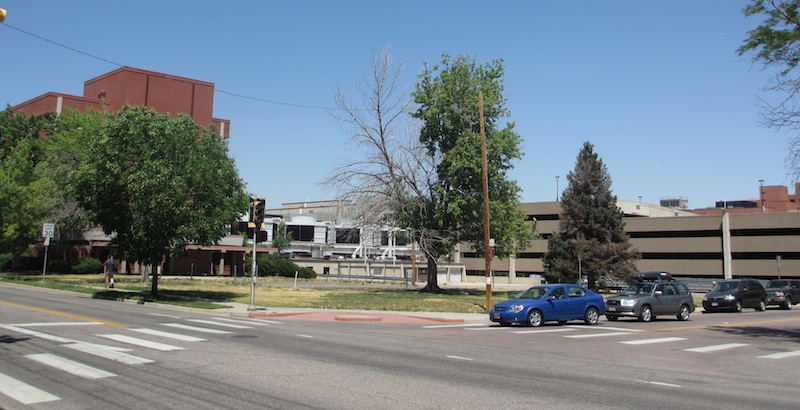
Future Location of High End Residential Development, 8th and Clermont, Looking Northwest (D. Saitta)
Happily, there’s now an opportunity to re-conceptualize the 9th and Colorado development with a much broader community in mind. This community includes not only ethnic and class “Others”, but also folks at opposite ends of the age pyramid: seniors and kids. Development input should be solicited using an array of methods that are sensitive to the different lived experiences of this diverse set of stakeholders—including those who live within striking distance of the site elsewhere in the city. In other words, we should attend to social infrastructure as well as built infrastructure. Both are key to creating long-term resiliency and sustainability. Here’s hoping that a new and more effective coalition of developers, politicians, city planners, and citizens—one that’s capable of taking the long view, and of generating appropriate compromises to achieve it—will soon appear.
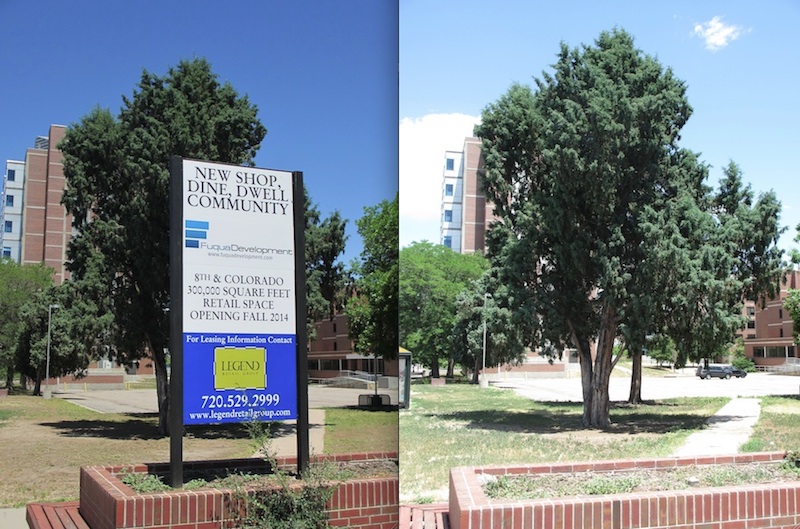
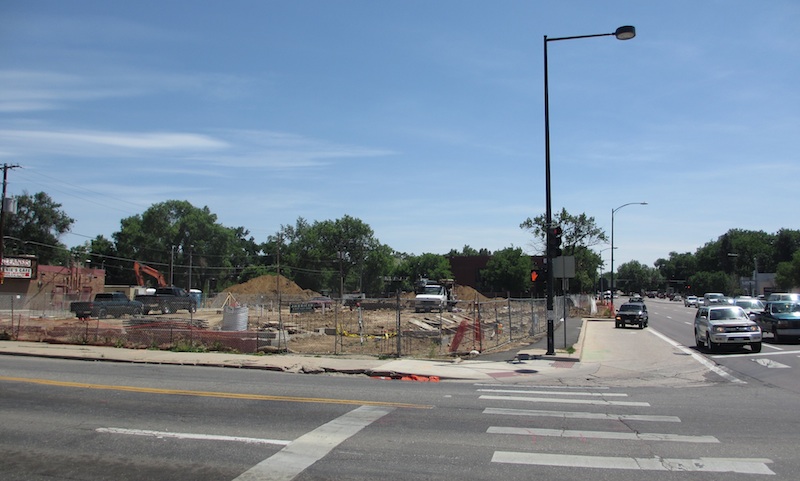
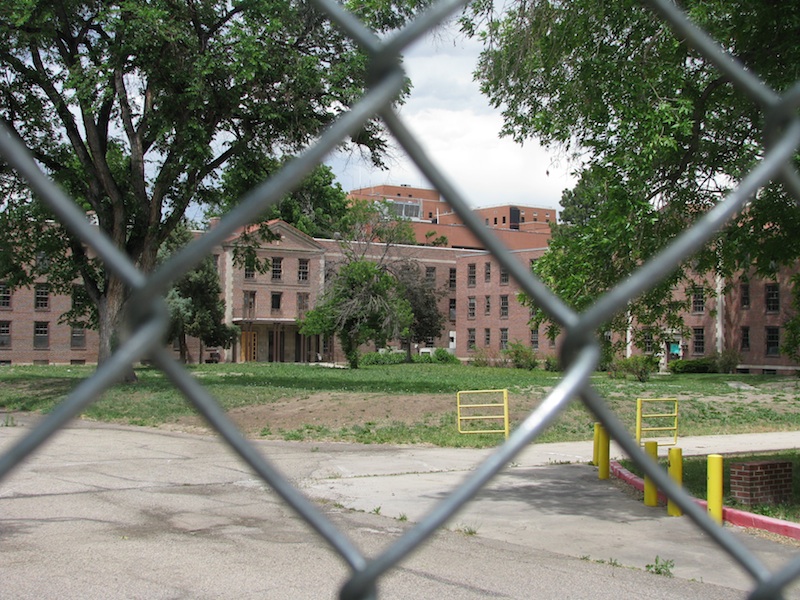
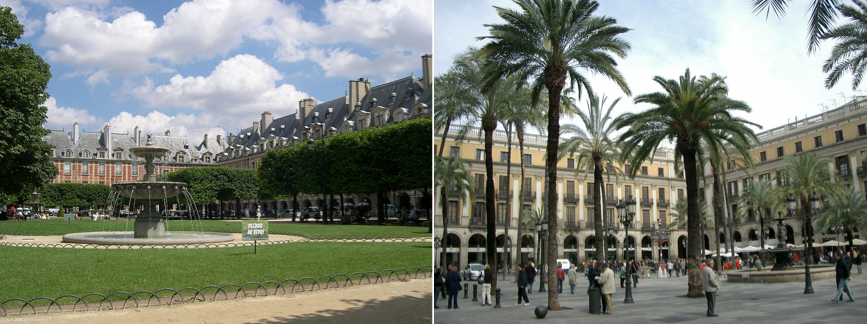
Leave a Reply